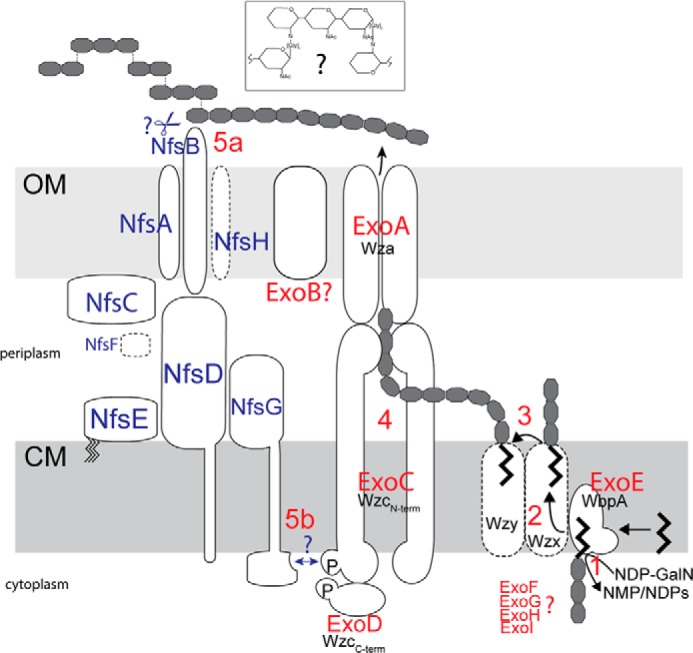FIGURE 6.

Working model of spore coat production and assembly in M. xanthus. GalNAc and Glu (11–17:1) polymers are synthesized and secreted to the cell surface by the Exo proteins (red text) and assembled into a stress-bearing structure by the Nfs proteins (blue text). The Exo proteins resemble a Wzy-dependent capsule secretion machinery; respective homologs are identified in black text. The polyisoprenoid lipid undecaprenol diphosphate (und-PP)-linked carbohydrate repeat units are generated on the inner surface of the cytoplasmic membrane (CM) by ExoE and the ExoF–I processing enzymes (step 1), translocated to the outer surface of the CM by an unidentified flippase (Wzx) (step 2), and polymerized by Wzy (likely MXAN_3026) (5) (step 3). Polymers are secreted to the cell surface by the terminal export complex consisting of ExoC/D and ExoA (step 4). The Nfs proteins are located in either the OM or CM as indicated. NfsG interacts with the AglQRS energy-harvesting complex (13) (data not shown). The Nfs proteins are necessary for assembly of the capsule-like carbohydrates into a rigid sacculus in a process that involves an apparent increase in the proportion of terminal Glc and GalNAc residues. This process may involve cleavage of polysaccharides chains on the cell surface (step 5a) or influence polysaccharide extrusion via interaction with ExoC/D (step 5b). See text for details. Inset, a possible arrangement of the spore coat in which glycine peptides (Glyn) replaces the acetyl group in certain GalNAc residues to bridge to the C1 carbon of an adjacent glycan. See text for details.
